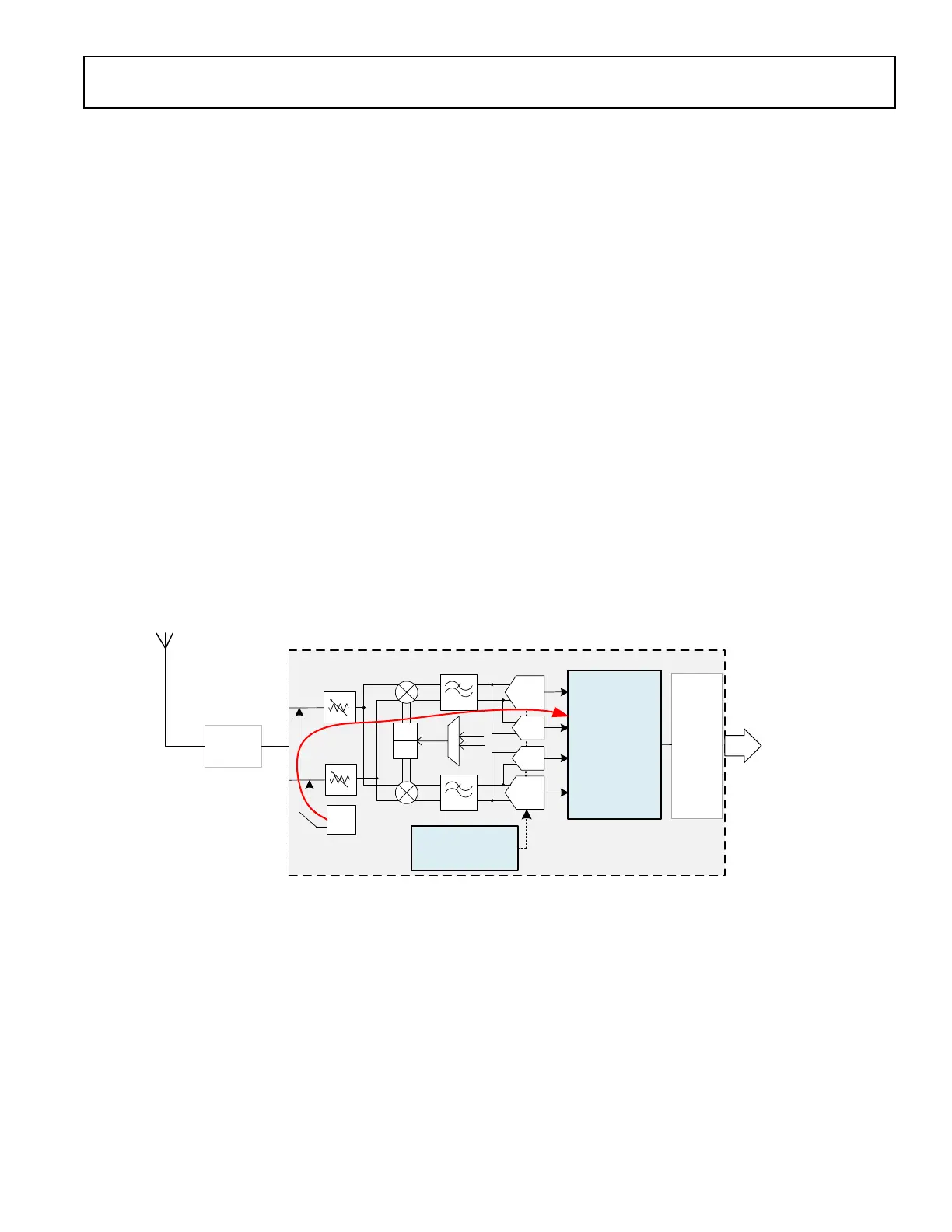Preliminary Technical Data UG-1828
Rev. PrB | Page 147 of 277
Table 63. APD Attack and Recovery Step Sizes
Gain Change Step Size
Gain Attack apdGainStepAttack
Gain Recovery apdGainStepRecovery
Step size refers to the number of indices of the gain table the gain is changed. As explained earlier, the gain table is programmed with the
largest gain in the Max Gain Index (typically index 255), with ever decreasing gain for decreasing gain index. Thus, if the APD gain
attack step size was programmed to 6, then this means that the gain index is reduced by 6 when the apdHighThresh has been exceeded
more than apdUpperThreshPeakExceededCnt times. For example: if the gain index had been 255 before this over range condition, then
the gain index would be reduced to 249. The amount of gain reduction this equates to is dependent on the gain table in use. The default
table has 0.5dB steps which in this example would equate to a 3dB gain reduction upon an APD over range condition.
The APD is held in reset for a configurable amount of time following a gain change to ensure that the receiver path is settled at the new
gain setting.
Half-Band Peak Detector
The HB peak detector is located in the digital domain at the output of the HB Filtering block. It can therefore also be referred to as the
Decimated Data Overload Detector because it works on decimated data. Like the APD detector, it functions by comparing the signal
level to programmable thresholds. It monitors the signal level by observing individual samples (I2 + Q2 or peak I/peak Q) over a period
of time and compares these samples to the threshold. If a sufficient number of samples exceed the threshold in the period of time, then
the threshold is noted as exceeded by the detector. The duration of the HB measurement is controlled by hbOverloadDurationCnt, while
the number of samples that should exceed the threshold in that period is controlled by hbOverloadThreshCnt.
Once the required number of samples exceed the threshold in the duration required, then the detector records that the threshold was
exceeded. Like the APD detector, the HB detector requires a programmable number of times for the threshold to be exceeded in a gain
update period before it will flag an over-range condition.
Figure 141 shows the two-level approach which is different from APD. It shows the gain update counter period, with the time being
broken into subsets of time based on the setting of hbOverloadDurationCount. Each of these periods of time is considered separately,
and hbOverloadThreshCount individual samples must exceed the threshold within hbOverloadDurationCount for an overload to be
declared. These individual samples greater than the threshold are shown in grey. Two examples are shown, one where the number of
samples exceeding the threshold is sufficient for the HB peak detector to declare an overload, and a second example where the number of
samples exceeding the threshold is not sufficient to declare an overload. The number of overloads is counted, and if the number of
overloads of the hbHighThresh exceed hbUpperThreshPeakExceededCount in a gain update counter period, then an over-range
condition is called. Likewise, if the number of overloads of the hbUnderRangeHighThresh does not exceed hbUnderRangeHigh-
ThreshExceededCount, then an under-range condition is called. Note that if hbOverloadDurationCount is set to equal to the time
duration of 1 sample and hbOverloadThreshCount is set to 1, the HB two-level approach becomes similar to the APD algorithm.
hbOverloadDurationCount
hbOverloadDurationCount
hbOverloadThreshCount
EXCEEDED
hbOverloadThreshCount
NOT EXCEEDED
gainUpdateCounter
24159-
1
15
Figure 142. HB Detector, Two-Level Approach for an Overload Condition

